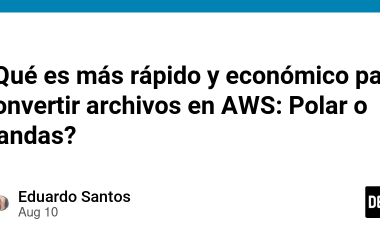Introduction
In today’s fast-paced world of software development, collaboration is key. Whether you’re a professional developer or a beginner just dipping your toes into the vast sea of coding, version control is a crucial skill to master. Enter Git, the go-to tool for managing and tracking changes in your codebase. This article aims to introduce you to the wonderful world of Git and help you get started with this essential version control system.
What is Git?
Git is a distributed version control system created by Linus Torvalds, the same genius behind the Linux operating system. It’s designed to help developers and teams manage their codebases, track changes, collaborate efficiently, and easily roll back to previous versions when things go awry.
In simple terms, Git is like a time machine for your code. It allows you to save snapshots of your project at different stages, create different branches for various features or bug fixes, and seamlessly merge them back into your main codebase when they’re ready. This way, you can work on your code without the fear of losing your progress.
Installation
Before you can start using Git, you need to install it on your computer. Fortunately, Git is available for all major operating systems. Here’s how to get started:
Windows:
- Download the Git for Windows installer from the official website (https://gitforwindows.org/).
- Run the installer and follow the on-screen instructions.
macOS:
- If you’re using macOS, Git may already be installed. Open the Terminal and type
git --versionto check. - If Git is not installed, you’ll be prompted to install it automatically.
Linux:
- On Debian/Ubuntu, you can install Git using the following command:
sudo apt-get install git
- On Fedora, you can install Git using the following command:
sudo dnf install git
- On CentOS, you can install Git using the following command:
sudo yum install git
Configuration
Once Git is installed, it’s essential to configure it with your name and email. This information will be associated with your commits, making it easy to track who made what changes in a project.
Open your terminal and type the following commands, replacing “Your Name” and “your.email@example.com” with your actual name and email:
git config --global user.name "Your Name"
git config --global user.email "your.email@example.com"
Creating Your First Repository
Now that you have Git set up, it’s time to create your first Git repository. A Git repository is essentially a folder where you’ll be tracking your code changes. Here’s how to create one:
-
Open your terminal.
-
Navigate to the directory where you want to create your Git repository. You can use the
cdcommand to change directories. -
Run the following command to initialize a new Git repository:
git init
This command will create a hidden .git directory in your project folder, which contains all the necessary files and information for Git to manage your repository.
Adding and Committing Changes
With your Git repository set up, you can now start tracking changes in your project. Git uses a two-step process for this: adding changes to a staging area and then committing them.
-
Make changes to your code in your project folder.
-
Use the following command to stage your changes:
git add .
The . means that you want to add all changes in the current directory to the staging area. You can also add specific files by replacing . with the file name.
- Commit your changes with a descriptive message:
git commit -m "Your commit message"
The commit message should be a brief summary of the changes you made. Be clear and concise.
Viewing History and Diffs
One of the powerful features of Git is the ability to view the history of your project and the differences between versions. Here are some useful commands:
-
git log: This command shows you a list of all commits in the repository, including the commit message, author, date, and a unique hash. -
git show: Replacegit logoutput. This command displays the changes made in a specific commit. -
git diff: This command shows the difference between the working directory and the last commit. It’s handy for reviewing your changes before committing.
Branching and Merging
Git allows you to work on different features or bug fixes simultaneously without interfering with each other. You can do this by creating branches. Here’s how it works:
Creating a New Branch
- Use the following command to create a new branch:
git branch
- Switch to the new branch:
git checkout
Merging Branches
Once you’ve made changes in your new branch and they’re ready to be added to the main codebase, you can merge the changes into the master (or main) branch:
- First, switch to the branch you want to merge into (e.g.,
master):
git checkout master
- Use the following command to merge your branch:
git merge
This process will integrate the changes from your branch into the main branch.
Remote Repositories and Collaboration
Git really shines when it comes to collaboration. You can work on projects with others and easily share your code via remote repositories hosted on services like GitHub, GitLab, or Bitbucket. To collaborate with others:
-
Create a remote repository on a platform of your choice.
-
Use the following command to add a remote repository to your local Git repository:
git remote add origin
- Push your local repository to the remote repository:
git push -u origin master
Now, you can collaborate with others by pulling their changes, pushing your own, and resolving merge conflicts if they arise.
Conclusion
Git is a fantastic tool for managing code and collaborating with others. While this guide covers the basics, there’s much more to explore in the world of Git. As you continue your coding journey, you’ll discover more advanced features and techniques to make your development workflow smoother and more efficient. So, gitting started with Git is just the beginning of your version control adventure! Happy coding!

![how-to-map-your-ecommerce-customer-journey-[template-included]](https://prodsens.live/wp-content/uploads/2023/10/15924-how-to-map-your-ecommerce-customer-journey-template-included-110x110.png-23keepprotocol)



